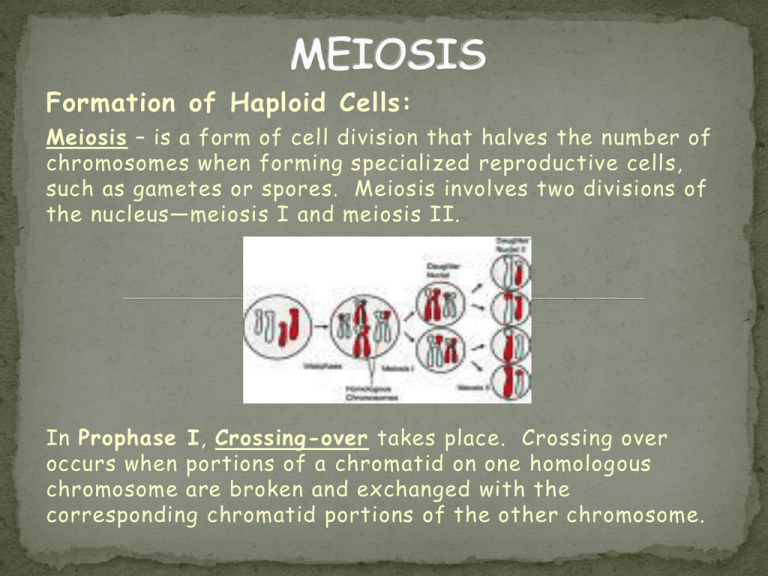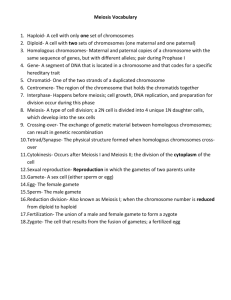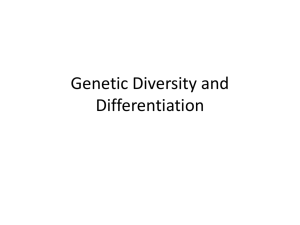meiosis - newmanr
advertisement

Formation of Haploid Cells: Meiosis – is a form of cell division that halves the number of chromosomes when forming specialized reproductive cells, such as gametes or spores. Meiosis involves two divisions of the nucleus—meiosis I and meiosis II. In Prophase I, Crossing-over takes place. Crossing over occurs when portions of a chromatid on one homologous chromosome are broken and exchanged with the corresponding chromatid portions of the other chromosome. Crossing Over: In Anaphase I, even though homologous chromosomes separate, the chromatids do not separate at the centromeres—each chromosome is still composed of two chromatids. The genetic material has recombined. Meiosis and Genetic Variation: Meiosis is an important process that allows for the rapid generation of new genetic combinations. Three mechanisms make key contributions to this genetic variation: independent assortment, crossing-over, and random fertilization. In humans, each gamete (sex cell: sperm and egg) receives one chromosome from each of 23 pairs of homologous chromosomes. Which of the two chromosomes that an offspring receives from each of the 23 pairs is a matter of chance. Independent assortment – each of the 23 pairs of chromosomes segregates (separates) independently. Thus about 8 million gametes with different gene combinations can be produced from the one original cell. Crossing-over and Random Fertilization The DNA exchange that occurs during crossing-over adds even more recombination to the independent assortment of chromosomes. Because fertilization of an egg by a sperm is random, the number of possible outcomes is 64 trillion. Meiosis and the joining of gametes are essential to evolution. No genetic process generates variation more quickly. The pace of evolution appears to increase as the level of genetic variation increases. (For example, when domesticate animals such as cattle and sheep are bred for larger size, many large animals are produced at first. But as the existing gene combinations become used up, the ability to obtain larger and larger animals slow down). MEIOSIS IN MALES The process by which sperm are produced in male animals is called spermatogenesis. Spermatogenesis occurs in the testes (male reproductive organ). The process by which gametes are produced in female animals is called oogenesis. Oogenesis occurs in the ovaries (female reproductive organ). During cytokinesis, the cytoplasm divides unequally. One of the resulting cells gets nearly all of the cytoplasm. It is this cell that will ultimately give rise to an egg cell. The other cell is very small and is called a polar body. The polar body may divide again, but its offspring cells will not survive. The larger cell develops into a gamete called an ovum (plural ova), or more commonly, egg.








